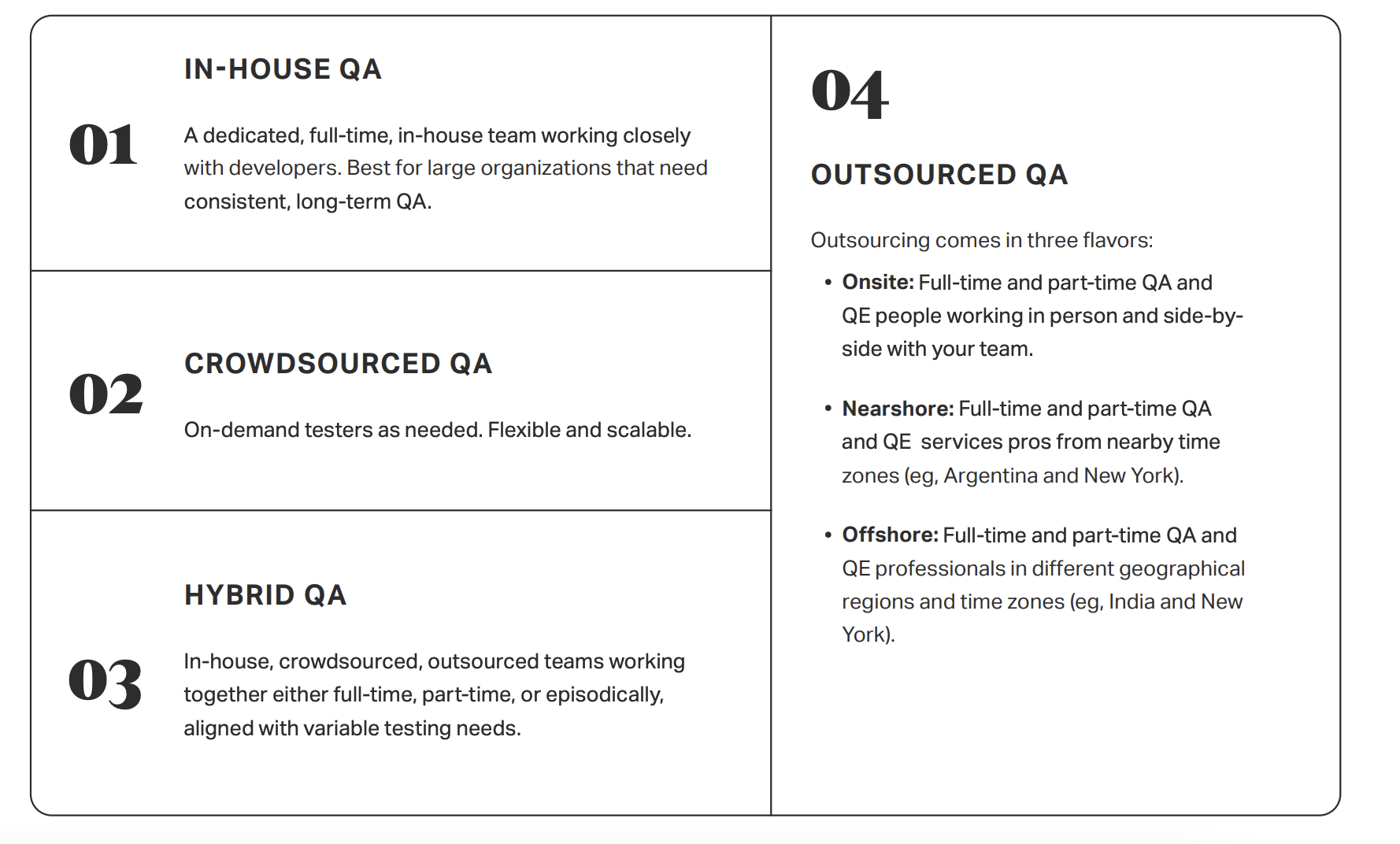Signal-driven testing: A new QA framework

Product leaders must garner multiple insights from traditional and non-traditional data streams for a more robust picture of QA needs. Enter a new approach, Signal-Driven Testing (SDT), which offers a more agile, efficient, and intelligent approach to software testing. SDT overcomes the traditional limitations of testing in isolation by harnessing real-time signals to continuously refine test coverage, targeting precious QA resources on the things that matter most over time.
When we marry raw information (data) with insights or logic (understanding what the data suggests), the resultant clarity we obtain is called a ‘signal.’ Signals can emerge from multiple data sources, such as end-user sentiment, historical test run results, and reported bugs. Combining and harnessing these signals is critical for optimizing cost, speed, and product quality.
Why should data power your QA strategy?
SDT is a data-driven approach to QA that enables product teams to be more responsive to product quality issues and gaps in test coverage. It focuses on leveraging data from across the DevOps ecosystem (internal and external systems) to inform where precious testing resources should be allocated to quickly identify and action issues that pose a risk to the end-user experience—the why is simple. By definition, there is no way for a product team to test every single configuration and usage pattern. QA represents a challenge in continually optimizing limited resource applications over time to ensure a high-quality end-user experience. Better decisions result from better data. SDT is about unifying and synthesizing the data needed to make test coverage decisions more comprehensive, real-time, and actionable.
Unlocking the Power of Flexible QA Staffing with Signal-Driven Testing
Signal-driven testing is not just a game-changer for improving software quality; it also revolutionizes how testing talent can be harnessed and deployed. Traditional staffing models often involve rigid allocations of full-time, part-time, or temporary resources, which may not always align with the ever-evolving needs of a project. Enter SDT’s data-driven insights to illuminate the path to optimal staffing strategies.
SDT provides a unique advantage by offering actionable data to guide staffing decisions over time. It allows teams to become more agile and dynamic in resource allocation and adjust staffing capacity based on the signals about the product’s quality and coverage gaps.

For instance, if SDT identifies specific patterns or issues through automated tests, it becomes possible to swiftly deploy ten manual testers to address those areas of concern. This responsiveness ensures that staffing resources are used efficiently and laser-focused on issues that can impact most significantly. SDT empowers organizations to align staffing decisions with real-time data, resulting in a more adaptive and effective testing process.
Better Optimization = Better Testing
Demand for increased software development speed necessitates an agile, context-aware approach to QA. By taking a data-driven approach to determining test coverage, engineering teams can increase the ROI on QA. Signal-driven testing offers teams this data-driven approach.
Signals aren’t just data points but actionable insights that can guide optimization. Here is a practical example: user reviews since the last release of the app into the app store consistently reference a “difficult signup” experience. This isn’t just a one-off complaint; it’s a pattern that should signal the product team to investigate and ultimately shift more test coverage towards the signup process of the app journey.
This feedback highlights a particular issue with the user login process, signaling a clear area for improvement. With this signal, testers can hone in on the exact problem, concentrating their efforts on resolving login challenges and UX issues that force users to respond.
We’ve assembled seasoned industry experts who have successfully scaled QA. They provide actionable insights on navigating the complexities of the current economic landscape while optimizing your testing processes.
Watch the webinar on demand.
Recognizing and acting on this feedback quickly can expedite the resolution process, minimizing delays and improving the overall user experience. Organizations can reduce testing workloads by structuring signals, aligning staffing models with SDT principles, and gaining a nuanced understanding of what the data truly represents.
Empowering Speed, Focus, and Continuous Improvement
Signal-driven testing offers several valuable benefits for improving the quality of mobile apps. Firstly, it significantly reduces the time to resolve issues and glitches, minimizing any negative impact on the end-user experience. By swiftly identifying and addressing problems through signals, developers can ensure that the application remains stable and reliable.
Secondly, this approach allows QA teams to allocate their testing capacity more efficiently, focusing on critical areas of the app experience that directly impact users. This targeted testing ensures that resources are utilized effectively, and potential issues in high-impact regions are promptly identified and resolved.
Additionally, signal-driven testing creates a valuable feedback loop between QA and DevOps teams. By continuously monitoring signals and reporting issues, QA teams provide essential insights that enable developers to build a better overall app experience. This collaborative approach leads to iterative improvements and a fully connected CI/CD pipeline.
